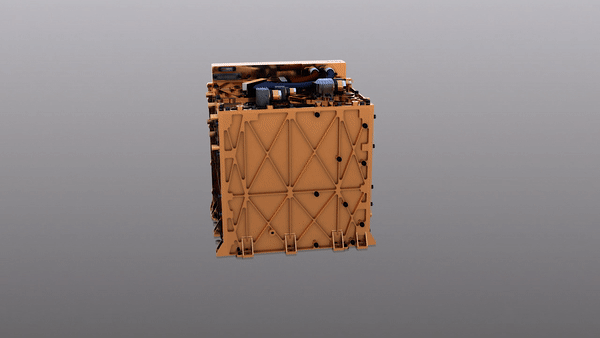Designed to reduce greenhouse gas emissions from mid-sized automobiles, MAER, was a
project I lead a team of 4 students to 1st place in Ohio State's First Year Engineering Design Competition.

Developed using 2024 Aluminum Alloy, MAER measures in just under 15"x9"x6" and weighs 17.5 pound. The design of the device is fully modular allowing for ease of use, and repairs throughout its lifespan. Contained within is a Solid Oxide Electrolysis chamber with 12 electrolysis plates and room for onboard electronics.
Project Overview
The final deliverable for this project was a polished Technical Design Review document and a PowerPoint Presentation to summarize the entire process. This project was apart of Ohio State's Fundamentals of Engineering 2, ENGR 1182, class.
Overtime, emission pollution from sectors, such as transportation, has contributed to an increase in greenhouse gas counts within Earth's Atmosphere. This project was founded on the principle of providing reliable, effective, and efficient transportation emission reduction devices. Each element of overcoming this technical challenge, is approached with a focus on effectiveness in both pollution capture amounts and cost reduction.
Throughout the brainstorming and initial development of this project, research on the products end users and market character were conducted. Part of this research included the use of administering a survey to a wide variety of students attending The Ohio State University. This survey sought to understand current college students perspective on greenhouse gas emissions, and their likely-hood of using devices on their personal vehicle if it was designed to help the greater good. In addition to this primary research, secondary research was conducted to provide data from sources outside of the university and act as a baseline of information regarding products on the market, environmental regulations, and past scientific research.
Once initial research was completed, the design process began. Taking inspiration from NASA's Perseverance Mars Oxygen In-Situ Resource Utilization Experiment (MOXIE), the final design and capabilities of MAER began to take shape. While utilizing similar processes as MOXIE, MAER had to take a different shape to more effectively mount to the understand of automobiles while maintaining a light final weight.

Credit: NASA Press Release, Apr 21, 2021
Project Results
Based on the final design and preliminary analysis of the device, including Computation Fluid Dynamic (CFD) and Finite Element Analysis (FEA) sims, the team determined that this design has the potential to make a real world impact if research and development was continued. Although the final deliverable of this project did not include a physical prototype or real world test results, initial indications are still promising.
Upon receiving and review our Technical Design Review, the class Professor and Teaching Assistances (TA) picked the best projects among the multiple teams within their sections to go to the First Year Design Showcase. MAER was selected to be one of the projects at this showcase. Since this project was designed in the Spring of 2021, admits the COVID-19 pandemic, the showcase was virtual. Regardless, after all presentations were completed, an independent panel of judges tabulated scores to determine 1st, 2nd, and 3rd place winners for the showcase. Resulting scores placed MAER 1st in this competition!